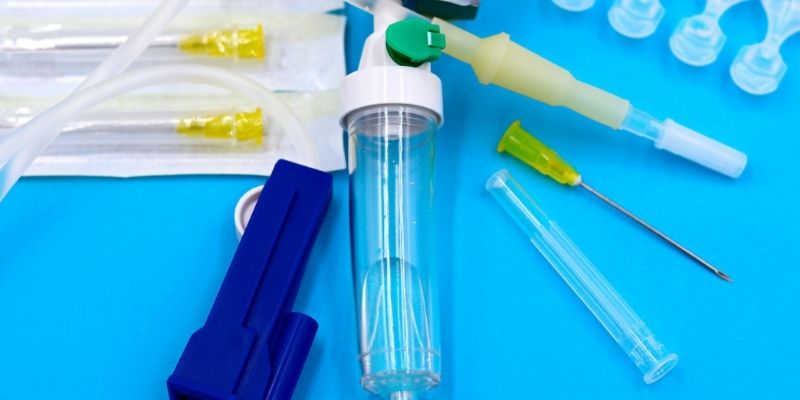Causes of Metabolic Alkalosis Explained; Know its Major Symptoms and Treatment
Advertisement
When the body's pH gets too high, it creates a condition called metabolic alkalosis that disrupts the body's natural balance. The body develops alkalosis when it holds too much bicarbonate or loses excessive hydrogen ions. Learning about metabolic alkalosis symptoms and treatments will help people take steps to control their condition.
Our exploration details all aspects of metabolic alkalosis, including its origins and signs, with clear explanations of diagnosis and treatment methods. Recommended treatment based on medical knowledge helps people return to their body's pH balance and stay healthy.
What is Metabolic Alkalosis?
Metabolic alkalosis develops when the body produces too much base, which makes the blood too alkaline. When everything functions correctly, the kidneys and lungs cooperate to keep blood pH within a healthy range. Small changes in blood acid-base balance create metabolic acidosis and alkalosis health risks. When metabolic alkalosis develops, it stems from increased bicarbonate production or loss of hydrogen ions, which drive up blood pH.
Common Causes of Metabolic Alkalosis
Metabolic alkalosis develops when different conditions disrupt how your body handles electrolytes and acids. Doctors must recognize the root causes to select correct medical actions.

Gastrointestinal Losses
People who vomit too much or need constant nasal tube suction develop metabolic alkalosis due to stomach acid loss. When stomach acid leaves the body, it carries hydrogen ions that build up in the blood, making it more alkaline.
Diuretic Use
Different amounts of diuretics help patients release more urine. Thiazides and loop diuretics push potassium and chloride out of the body, which triggers the kidneys to hold more bicarbonate and helps restore electrolyte balance. When kidneys with health problems process too much alkaline substance, it leads to metabolic alkalosis.
Excessive Alkali Intake
Large amounts of antacids and sodium bicarbonate products can raise blood pH too high. People who take several antacid tablets or receive bicarbonate injections for acidosis develop this condition.
Symptoms of Metabolic Alkalosis
Your metabolic alkalosis symptoms happen based on how severe your disease has become and what caused it. Metabolic alkalosis can trigger health problems across multiple systems, including the nervous system, muscles, heart, and digestive organs.
Neurological and muscle system issues occur when the blood becomes too basic.
When your blood becomes too basic, it creates weakness and involuntary muscle movements in your limbs. When calcium levels become disturbed because of alkalosis the condition can lead to involuntary muscle contractions with further progression into seizures and convulsions.
Cardiovascular Symptoms
When blood acidity levels change, the heart becomes less reliable. Metabolic alkalosis triggers abnormal heart rhythms that cause unpleasant heart palpitations and accelerated heart rate. A significant drop in blood pressure, known as hypotension, can develop.
Gastrointestinal Issues
Metabolic alkalosis makes patients feel sick because they vomit and lose their hunger. When gastrointestinal problems (vomiting) happen with alkalosis, your body struggles to balance acid levels. Your brain functions are reduced when you experience neurological problems.
When metabolic alkalosis gets extreme, it affects mental state and physical alertness until the brain shuts down completely. When the body tries to balance pH levels, these symptoms disturb brain performance.
Diagnosing Metabolic Alkalosis
Diagnosing metabolic alkalosis involves a combination of clinical evaluation and laboratory tests to identify the causes and severity of the condition.
Clinical Assessment
A thorough clinical assessment begins with a review of the patient's medical history, including any medications being used (e.g., diuretics or antacids) and the symptoms they are experiencing. Healthcare providers will also ask about recent episodes of vomiting or dehydration, as these are common causes of metabolic alkalosis.
Laboratory Tests
Once metabolic alkalosis is suspected, blood tests become critical in confirming the diagnosis. Arterial blood gas (ABG) analysis assesses blood pH, bicarbonate levels, and the partial pressure of carbon dioxide. Additionally, electrolyte levels, including sodium, potassium, chloride, and bicarbonate, are measured to assess the extent of the imbalance. Urine electrolyte testing may also evaluate the kidneys' role in acid-base balance.
Treatment for Metabolic Alkalosis
The treatment for metabolic alkalosis aims to address the underlying cause while correcting the pH imbalance. Resolving the root cause can bring the body's pH level back to normal and relieve the associated symptoms.
Replenishing Electrolytes
One of the first steps in treating metabolic alkalosis is replacing lost fluids and electrolytes. Intravenous fluids such as saline may be administered to restore fluid balance, while potassium and chloride supplements may be given to correct electrolyte deficiencies contributing to alkalosis.
Correcting Underlying Causes
If factors like vomiting cause the condition, the focus will be on treating the gastrointestinal issues and preventing further acid loss. Similarly, if diuretic use is the cause, adjusting medications may be necessary. Reducing or discontinuing antacids or sodium bicarbonate will be key to addressing the condition when excessive alkali intake is the issue.
Acidifying Agents
In more severe cases where there is a significant pH imbalance, acidifying agents like hydrochloric acid or ammonium chloride might be utilized. These agents help lower blood pH but must be administered carefully under close medical supervision to avoid complications.

Preventing Metabolic Alkalosis
While some causes of metabolic alkalosis, such as certain medical conditions, may not be preventable, many factors can be managed to reduce the risk. Proper management of vomiting and diarrhea, careful use of diuretics, and avoiding the excessive use of antacids or other alkali substances can help maintain a balanced pH level and prevent alkalosis.
Conclusion
Serious metabolic alkalosis is developed when the body's pH levels get out of balance. Knowing how metabolic alkalosis develops, plus spotting its warning signs, will help people maintain their health by getting proper treatment before things worsen. You should contact medical professionals for professional diagnosis and therapy when you sense metabolic alkalosis.
On this page
What is Metabolic Alkalosis? Common Causes of Metabolic Alkalosis Gastrointestinal Losses Diuretic Use Excessive Alkali Intake Symptoms of Metabolic Alkalosis Cardiovascular Symptoms When blood acidity levels change, the heart becomes less reliable. Metabolic alkalosis triggers abnormal heart rhythms that cause unpleasant heart palpitations and accelerated heart rate. A significant drop in blood pressure, known as hypotension, can develop. Gastrointestinal Issues Diagnosing Metabolic Alkalosis Clinical Assessment Laboratory Tests Treatment for Metabolic Alkalosis Replenishing Electrolytes Correcting Underlying Causes Acidifying Agents Preventing Metabolic Alkalosis ConclusionAdvertisement












